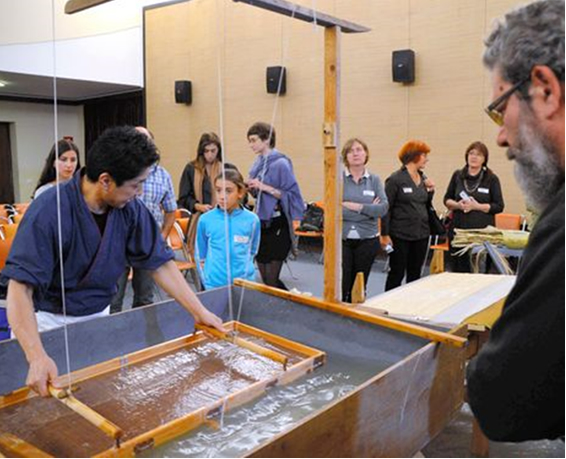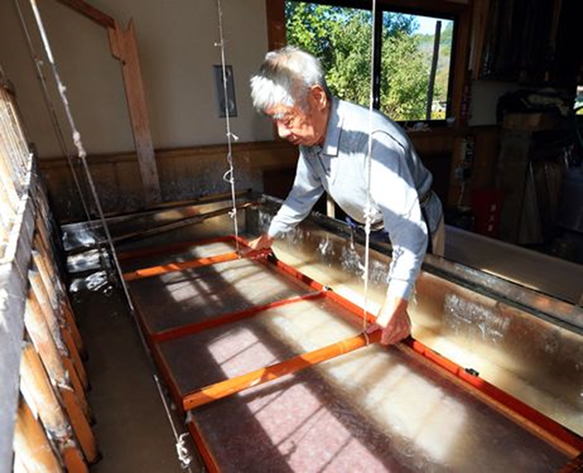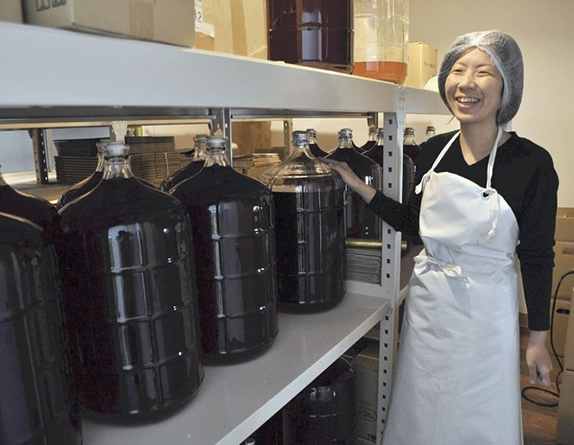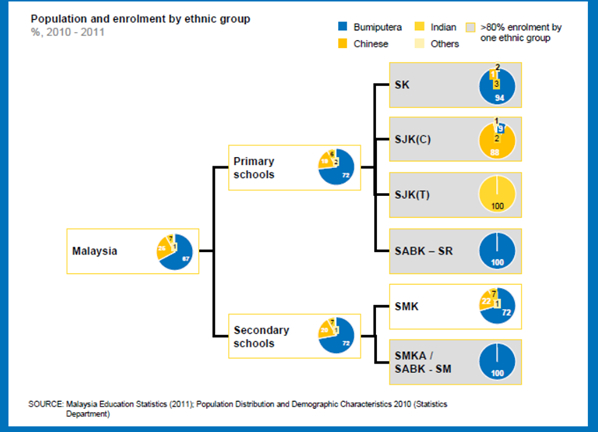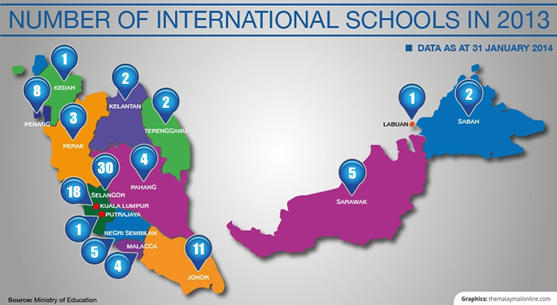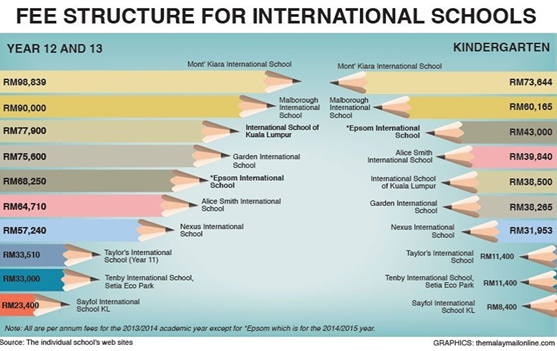The establishment of new international schools has continued at a rapid rate over the past 5 years in Malaysia, a country which has a complicated national education system for different ethnic groups (refer to the previous article “1. Sudden increase in international schools and “2. The challenging education system of the multiracial country, Malaysia”).
The main reason why Malaysian people are becoming more interested in international school education is most likely because of the increasing concern regarding English competency – in Japan, where people hope for English competency, Malaysians are concerned.
Many people say English is useful in Malaysia and it is true. I can’t speak Bahasa Malaysia at all, but I have never had a problem, at least in Kuala Lumpur. English is generally used as a common language for business and conversation among the different races.
Interestingly, however, it is thought that this high level of English proficiency is falling within the younger generation.
There are many people in their sixties or older who speak English fluently because English education at school was a part of government schools until the 1960’s. Since the 1970’s, however, language policy has focused on Bahasa Malaysia and, despite measures to strengthen English literacy, there has more emphasis on Bahasa Malaysia recently.
Therefore, parents who are concerned about their child’s English competency are more interested in international schools, or private local school which focus more on English. This tendency is more obvious in middle-class Chinese or Indian Malaysians who are at a disadvantage in public schools because of the Bumiputera policy. They question their future potential to earn by acquiring Bahasa Malaysia.
Also, parents are increasingly doubtful of the Malaysian style education which emphasizes test results.
One of Japanese who has experienced working in a Malaysian educational interface for many years talk about the current cramming system of education:
____
Japan followed a similar path in the past – the “cramming” style of education was effective in improving the national education level in a short time and for producing the elite to lead the growing country, but now it stands at a turning point. An increase in the number of students dropping out, the tendency to “burnout” after graduation, and a lack of creative skills etc. are recognized as the harmful consequences of the current education system. There is a growing sense of the crisis that Malaysia might not survive international competition if the trend continues. However, the government cannot find an approach to change the existing education system – it’s difficult to retrain teachers who know only teaching by rote.
____
We know that all countries, including Japan, face difficulties in educating the next generation which carries the weight of responsibility for the future of the country. Even nations as a whole grapple with what is the ideal education, so it’s natural that we, as parents, sometimes don’t know what to do for our children.
Incidentally, I feel very sorry for young primary students being ranked by scores, though they seem surprisingly unconcerned even if they finish at the bottom.
The government has designated the international school industry is a part of NKEA (National Key Economic Areas) – I feel this is overly bold, but how do you feel?
I am interested in what can be expected from international school education, that’s why I am wondering;
How does each school recruit enough high-quality teachers according to its own educational policies and content?
Do teachers have enough experience?
Does an international school education justify the expensive fees?
Isn’t there too much supply in comparison with demand?
I will focus on the various doubts surrounding significant, personal expectations next time.

4th International school fair held at a big shopping mall in Kuala Lumpur
Finally, let me write about more familiar issues concerning bilingual education.
My elder son joined an English language preschool and I was sure it would prove to be advantageous for him. But since he turned 4 years old I’ve been more and more concerned because his speech is often a mixture Japanese and English, and he prefers to count numbers in English because counters in Japanese are difficult to remember.
I realized all over again that his Japanese ability is the base and he will not understand arithmetic or science, let alone Japanese, without a high level of Japanese or imagination based in Japanese. I have become impatient about the fact that my son may lack the ability to think and write well in Japanese if I don’t carefully support him. I have to avoid this no matter what.
I found out for the first time that this is what the mother tongue is for us and I was more able to understand why each race in Malaysia is supported by their school.
Reported by Makiko Wada, Sugawara Institute


